Wet and dry.
On the first day in Busan the weather was beautiful and we took the Haeundae Route of the Busan City Tour from near our hotel. We then changed to the Taejongdae Route and went to Taejongdae Island, where we had a pleasant 5.6 km stroll to the lighthouse and back.
As I have mentioned before, the Koreans love to walk.
Here in Busan, they wear enough kit to climb the Jungfrau, even if they are only going for an easy stroll around a city park. There are dozens of shops, both in the streets, the malls and even in the freeway rest stops, selling shoes, apparel, poles and packs.
The contrast between the modern section, near our hotel, and the older Busan, near the Central Station, is amazing. Busan is obviously a city that has had rapid growth. The older part of town has been left behind and replaced by high rise towers, shopping malls, hotels and an impressive system of bridges and fly-overs.
Even in Busan westerners were in short supply and we only encountered a few groups on our travels around the city. The majority were young Americans here for the Busan International Film Festival (BIFF). Held annually, it is regarded as one of the most significant film festivals in Asia.
It was Saturday and the streets were crowded with day trippers and there was only standing room on the bus for the ride back to Central Station.
There was still light in the sky so we went for another walk, this time around Dongbaok Park, also known as Camelia Park, which was opposite our hotel. By the time we reached the far side the sun had set and the city lights had taken over. We then had a great view of Gwangandaegyo Bridge, the city and the APEC (Asia Pacific Economic Cooperation) building, which was in the foreground.
The next day we were up and out early for a day trip Gyeongju Bulguksa Temple, Seokguram Grotto, Tumuli Park and the Naional Museum.
Our guide, John, was the perfect partner, especially with the holy sites as his understanding of religion was excellent. He was widely travelled and had even spent time living in the Middle East, so his knowledge of all faiths helped to put what we were seeing into an historical perspective.
Gyeongju Bulguksa Temple is known as the Paradise of Buda and was built by the Silla Kings AD 751-774. The temple was the centre of Silla Buddhism and of prayer for protection against foreign invasion.
It didn’t work, as the temple was burnt down in 1593 by the Japanese.
From 1969 to 1973 it was completely restored and in 1995 it, along with Seokguram Grotto, our next destination, was designated as UNESCO World Heritage sites.
Seokguram Grotto is based on Indian Buddhist grottos and built in 751. Considering its age it’s a marvel of engineering, being constructed entirely of granite, without the use or mortar and with a tolerance between the joints of less than one millimeter.
Then the rains came as we were on-route to Tumuli Park and by the time we were there it was torrential. John was in no way deterred by the change in weather and soon had us trudging through the pouring rain.
Tumuli Park is the ancient burial grounds of Silla Kingdom 500-600AD and there are dozens of these earthen mounds in the park. The larger ones, reserved for important people, have a wood-lined chamber, covered with large river rocks and then encased in earth.
Only two of these tombs have been excavated. Cheonmachong, or the Flying Horse Tomb is 47m in diameter and 12.7m in hight and when opened revealed a wealth of artifacts for the King to take to the ‘next life’.
Our final stop on a long day was the National Museum where many of the artifacts from the Cheonmachong Tomb are kept.
Soaked to the skin, and leaving watery footprints wherever we went, we raced through the museum visiting only the essential exhibits.
It was then back on the bus and back to the hotel to try and dry out.
Monday was spent drying our saturated clothes from the Sunday tour and a walk around Busan. This included the Zenith Towers, a three tower residential block, with the ‘Premium Brands’ section. This will soon become a samples and seconds retail outlet as no one was there and half of the shops had already closed.
Continuing our stroll and with an eye on the darkening sky we discovered the Sooyoungro Presbyterian Church, an excellent example of contemporary church architecture.
Our final stop was the Shinsegae Department Store.
We had been told that it’s the world’s largest and once we were inside we could see why. There were five or six floors of shopping opportunities, with fashion, food, cosmetics, an ice rink and a floor devoted entirely to hiking gear.
On our last day in Busan the skies cleared for our trip to Junam Wetland Park and Haeinsa Temple. John was again our guide.
The Junam Wetland Park is the largest natural wetland in Korea. It consists of four swamps with a total area of 602 hectare.
This is a tourist bonanza for the area so the government pays the local farmers to grow rice to feed the birds.
Ironically it has to import rice to feed the people.
It’s a haven for migratory birds with 10,000 – 20,000 arriving daily in winter and 5,000 – 6,000 in summer. The birds migrate from Siberia and the ducks and swans are huge. They are the A380s of the bird world and obviously too well fed on free Korean rice.
John said, “You have visited the Paradise of Buda at Bulguksa Temple, now you have seen the Paradise of Birds at Junam Wetland.”
It was a long drive to Haeinsa Temple and we noticed just how mountainous Korea is, with every piece of flat land being occupied with either agriculture or industry. The thousands of high rise apartment blocks, that are part of every city, are squeezed up against the mountain sides.
Haeinsa Temple is built near a fast flowing river, with the water tumbling over giant boulders on its way to the valley below.
It is interesting that the Christians built their churches on the highest point, to be closer to their god, while the Buddhists built their temples in the mountains to be closer to nature.
There was a local festival and the streets to the temple were lined with stalls selling food and herbal treatments. There was also an art festival, the Haein Art Project, with sculptures and installations throughout the temple grounds.
One of the main features of Haeinsa Temple is the Tripitaka Koreana, a registered UNESCO World Heritage site. Housed in four buildings are three collections of Buddhist Scriptures, dating from the 13th Century. There are 81,350 carved wooden blocks, made from naturally treated pine and wild cherry wood.
They are protected from insects and vermin by layers of salt, charcoal, powdered lime and sand, that are 3 meters deep. The building is also totally ventilated, on all sides, to allow for a natural flow of air, again to protect the wooden tablets.
The other temple buildings are decorated, both inside and out, with paintings telling stories of life, enlightenment as allegory. In many ways they are similar to the Painted Monasteries of Moldavia in Romania, that we visited last year.
John was telling one story about Man’s journey through life. It shows an elephant running away from the fire and as a result of the rampaging beast Man jumps out of harms-way, only to find himself is a worse predicament. He is clinging to a vine, above him rats are chewing through it, while below, a pit full of snakes are waiting for him to drop.
There is a bee hive, dripping honey, above Man’s head and while he is in mortal danger, he still can’t resist the pleasure of the sweet nectar.
Life, death, pleasure, pain. More yin-yang.
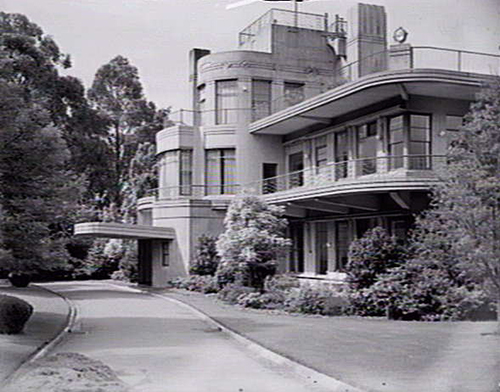
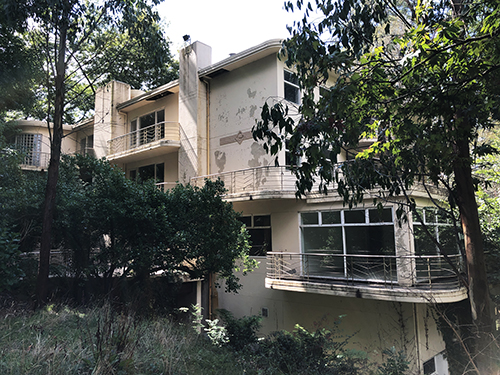
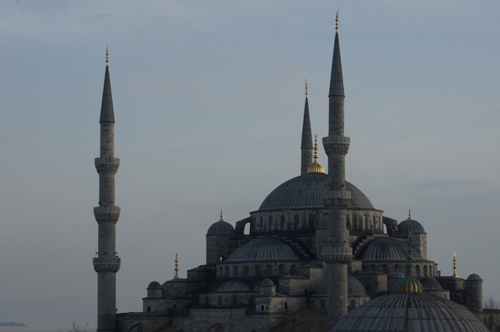
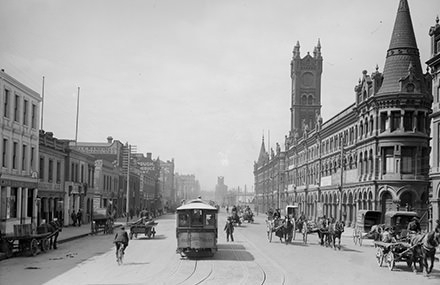
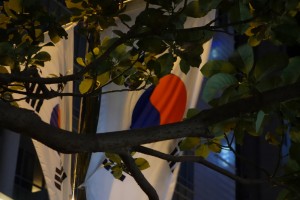

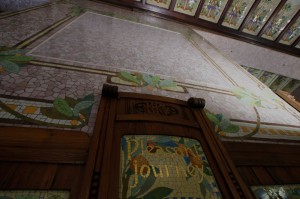

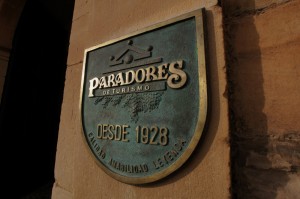
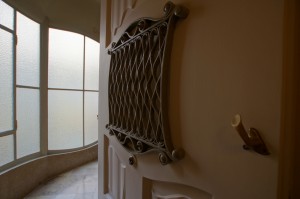
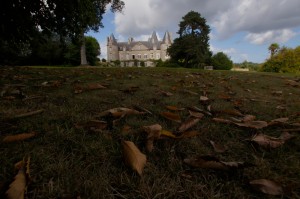










Whatever happened to original architecture?
Wednesday, April 26th, 2023In domestic architecture the ‘Hampton Style’ is popping up all over Australia, even in Hampton, here in Melbourne.
But it’s not from here.
The current iteration comes from The Hamptons, on the East Coast of Long Island in New York.
Even this style was influenced by Colonial India.
The Indian Bungalow, known as a ‘Bangla’ originated in Bengal between the 1760s and 1850s and was developed to house British colonial officials.
This style was first introduced into Australia in the 1840s and became known as the ‘Queenslander’.
In the past, the United States had Frank Lloyd Wright (1867-1959) and Australia had Robin Boyd (1919-1971). However in the last 50 years, no one seems to have stepped up to leave their mark on domestic architecture.
I have always bitched about the lack of originality, especially in the US.
However now we seem to have adopted their boring approach of just copying the past.
Posted in Architecture, Comment, Grumbling | No Comments »